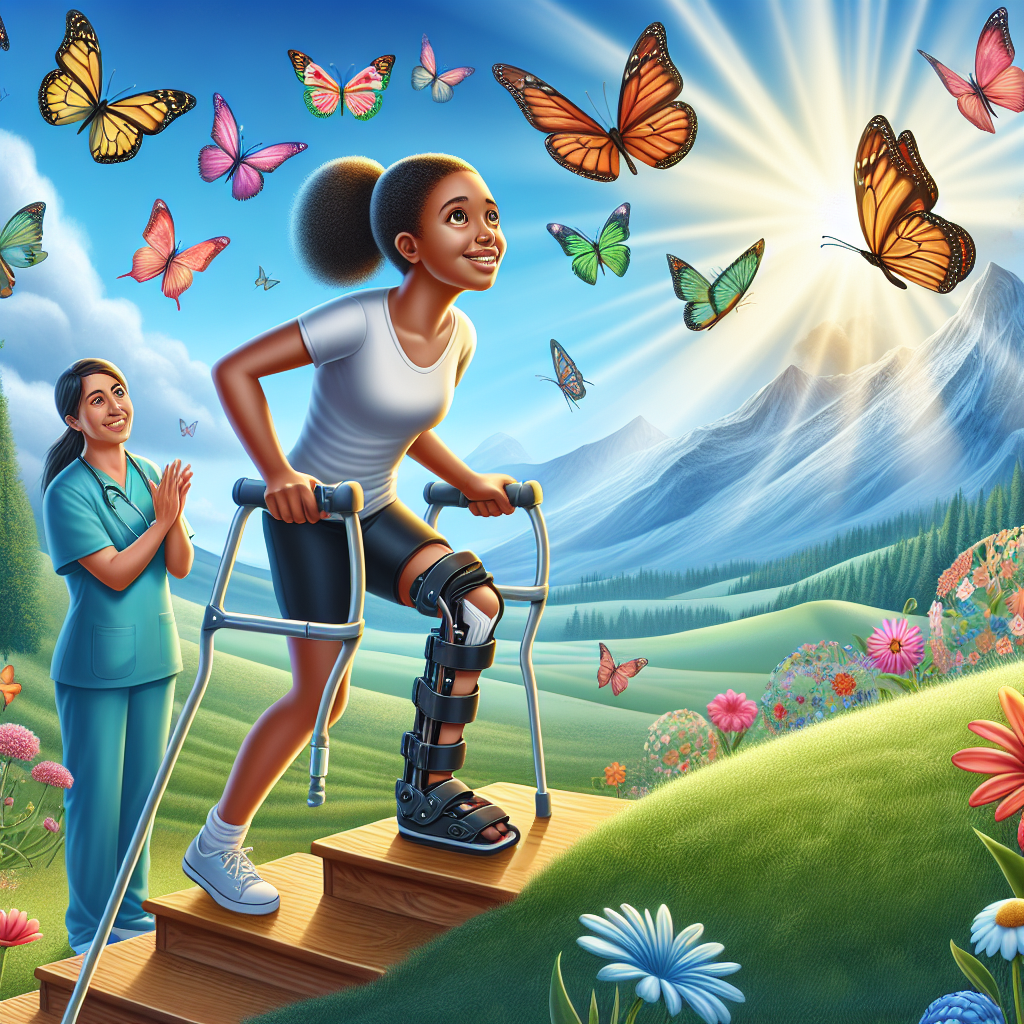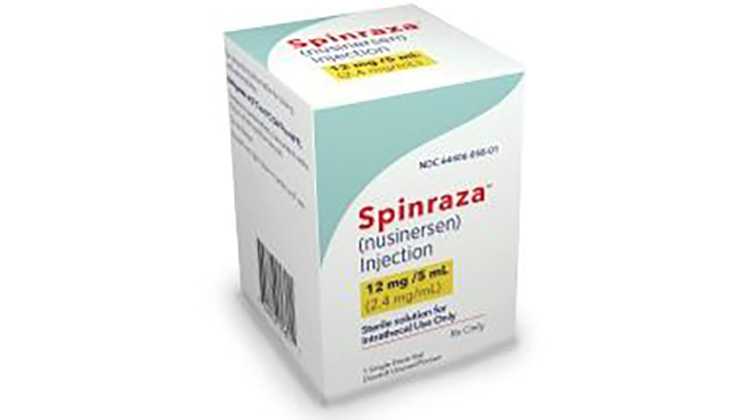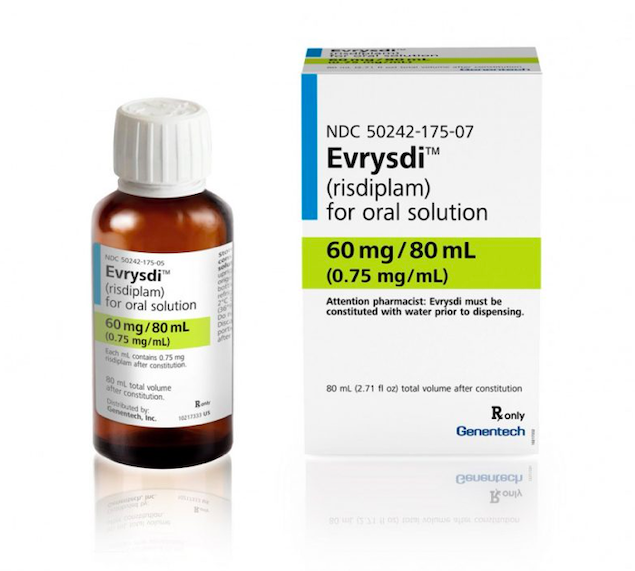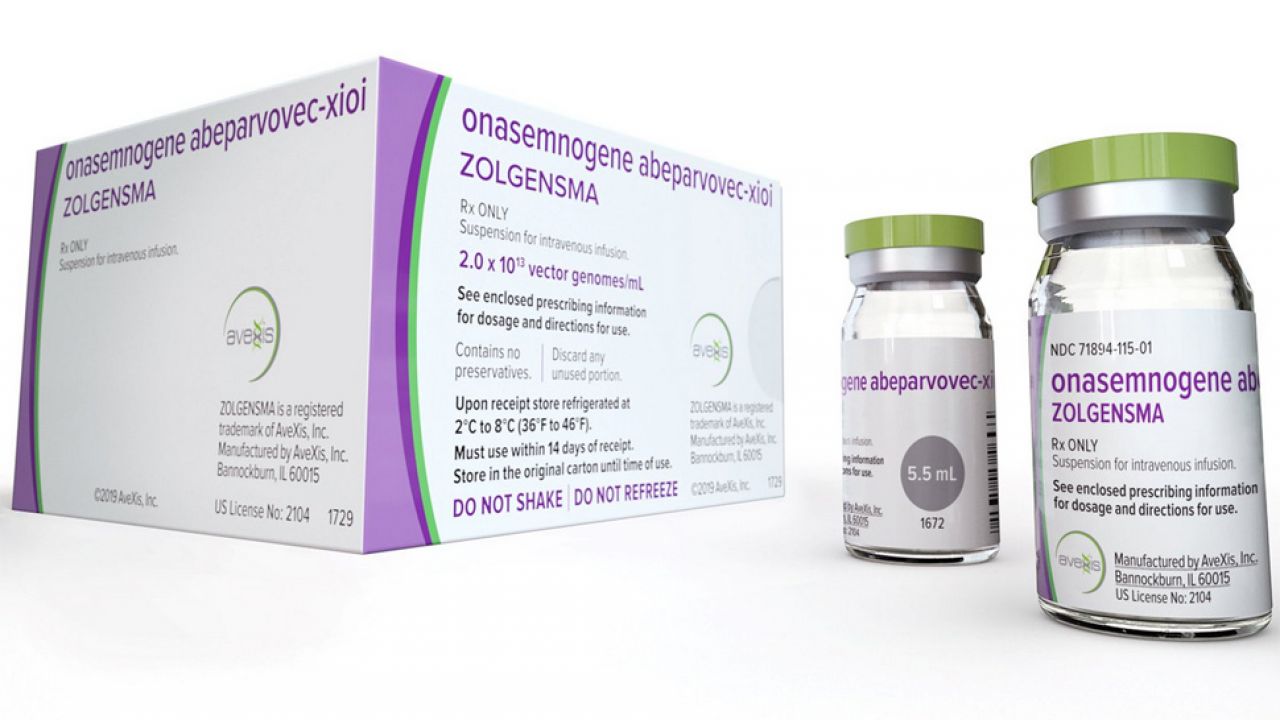New Spinal Muscular Athrophy treatments 2024
New Spinal Muscular Athrophy Treatments 2024
Spinal Muscular Atrophy (SMA) is a genetic disorder characterized by weakness and wasting (atrophy) of the muscles used for movement (skeletal muscles). It is caused by a loss of specialized nerve cells, called motor neurons, in the spinal cord and the part of the brain that connects to the spinal cord. SMA affects the muscles closest to the center of the body, such as the shoulders, hips, thighs, and upper back. Symptoms can vary widely, ranging from mild muscle weakness to severe impairment that can lead to difficulty breathing and eating. SMA is classified into several types based on the age of onset and the severity of the muscle weakness.
For individuals researching treatment options for SMA, there are several FDA-approved medicines that might be considered. Nusinersen (brand name Spinraza) is an antisense oligonucleotide that increases the body's production of the survival motor neuron (SMN) protein, which is deficient in individuals with SMA. Onasemnogene abeparvovec-xioi (brand name Zolgensma) is a gene therapy that targets the genetic root cause of SMA by delivering a copy of the gene responsible for SMN protein production. Risdiplam (brand name Evrysdi) is an orally administered drug that also modulates the splicing of SMN2 gene transcripts to increase SMN protein levels. The choice of treatment depends on various factors, including the type of SMA, the age of the patient, and the specific needs and medical history of the individual.

Treatment options
| Treatment option | Estimated cost | Efficacy | Eligibility |
|---|---|---|---|
| Spinraza (Nusinersen) | $125,000 per dose | Improves motor function | Approved for all ages and types of SMA |
| Evrysdi (Risdiplam) | $10,000 per month | Improves motor function and survival | Approved for patients 2 months of age and older |
| Zolgensma (Onasemnogene abeparvovec) | $2.1 million per one-time treatment | Improves motor function; potential one-time cure | Approved for children under 2 years old |
| Physical Therapy | Varies by provider | Can improve mobility and prevent complications | Applicable to all SMA patients |
| Respiratory Support | Varies by equipment and usage | Essential for maintaining respiratory function | Typically required for Type 1 and severe Type 2 SMA |
| Nutritional Support | Varies by dietary needs | Important for overall health and growth | Applicable to all SMA patients |
| Experimental Gene Therapy (not FDA approved) | Cost not established | Potential to halt disease progression | Typically available only through clinical trials |
Treatments options in detail
Spinraza (Nusinersen)
Spinraza, generically known as nusinersen, is an antisense oligonucleotide medication and was the first drug approved by the U.S. Food and Drug Administration (FDA) for the treatment of spinal muscular atrophy (SMA). It is designed to increase the production of the survival motor neuron (SMN) protein, which is critical for the maintenance of motor neurons. The absence or deficiency of this protein leads to the progressive muscle weakness and atrophy seen in SMA.
Spinraza is administered via intrathecal injection, which means it is injected directly into the cerebrospinal fluid surrounding the spinal cord. This method allows the medication to reach the motor neurons more effectively. Treatment typically begins with a loading dose phase, which includes four doses within the first two months, followed by maintenance doses every four months thereafter.
Clinical trials have shown that Spinraza can lead to improvements in motor function and, in some cases, survival in individuals with SMA. It is approved for use in pediatric and adult patients with SMA and has become a standard treatment option for this condition.
Evrysdi (Risdiplam)
Evrysdi, also known as risdiplam, is an oral medication approved by the FDA for the treatment of SMA in adults and children 2 months of age and older. Like Spinraza, Evrysdi works by increasing the production of the SMN protein. It does this by modifying the splicing of the SMN2 gene, leading to an increase in functional SMN protein.
The oral administration of Evrysdi is a significant advantage, as it allows for at-home treatment without the need for hospital visits for intrathecal injections. The dosage of Evrysdi is based on the weight of the patient and is taken daily. Clinical trials have demonstrated that Evrysdi can improve motor function and survival rates in SMA patients.
Zolgensma (Onasemnogene Abeparvovec-xioi)
Zolgensma, with the generic name onasemnogene abeparvovec-xioi, represents a novel gene therapy approach to treating SMA. It is an FDA-approved treatment for pediatric patients less than 2 years of age with SMA, including those who are pre-symptomatic. Zolgensma works by delivering a functional copy of the SMN1 gene directly to motor neuron cells using a viral vector.
This one-time intravenous infusion has the potential to halt the progression of SMA by providing a new, working copy of the gene that produces the SMN protein. Clinical trials have shown that Zolgensma can lead to significant improvements in survival and motor function. Due to its nature as a gene therapy, the long-term effects and potential risks are still being studied, but it has shown promise as a transformative treatment for SMA.
Physical Therapy and Rehabilitation
Physical therapy and rehabilitation are integral parts of the comprehensive management of SMA. These non-pharmacological interventions aim to maintain mobility, prevent contractures (permanent shortening of muscles or joints), and improve the overall quality of life for patients. Physical therapy may include exercises to strengthen muscles, improve motor skills, and assist with breathing function.
Occupational therapy is also often recommended to help patients with SMA develop the skills necessary for daily living activities. These therapies are tailored to each patient's abilities and needs and are adjusted over time as the condition progresses.
Nutritional Support
Nutritional support is crucial for patients with SMA, as they may have difficulty swallowing and are at risk for malnutrition. A dietitian may work with patients and their families to ensure adequate nutrition, which can involve special diets or the use of feeding tubes in severe cases.
Respiratory Care
Respiratory care is another key aspect of SMA treatment due to the weakness of the respiratory muscles that can lead to difficulties with breathing and increased risk of respiratory infections. Interventions may include cough assist devices, ventilators, and other respiratory support equipment. Regular monitoring of respiratory function is important to manage and prevent complications.
Experimental Treatments and Off-Label Use
There are ongoing clinical trials investigating new potential treatments for SMA. These experimental treatments include novel gene therapies, small molecules, and other approaches that aim to increase SMN protein levels or improve the function of motor neurons. Patients with SMA may be eligible to participate in these trials, which offer access to cutting-edge therapies that are not yet FDA-approved.
Off-label use of medications refers to the use of drugs for an indication that is not officially approved by regulatory agencies. In the context of SMA, some physicians may prescribe medications off-label to manage symptoms or complications associated with the disease. However, these uses are typically based on anecdotal evidence or small studies, and patients should discuss the potential risks and benefits with their healthcare provider.
Supportive Care
Supportive care is essential for managing the symptoms of SMA and improving the quality of life for patients. This may include the use of adaptive equipment such as wheelchairs, standing frames, and orthotic devices to aid mobility. Sleep therapy and pain management are also important components of supportive care for individuals with SMA.
Conclusion
The treatment landscape for SMA has evolved significantly in recent years with the introduction of targeted therapies like Spinraza, Evrysdi, and Zolgensma. These treatments have changed the prognosis for many individuals with SMA, offering hope for improved motor function and survival. Alongside these medications, supportive therapies such as physical therapy, nutritional support, and respiratory care remain critical to the overall management of the disease. Ongoing research and clinical trials continue to explore new treatment avenues, with the goal of further improving outcomes for patients with SMA.
Symptoms
Most Common Symptoms of Spinal Muscular Atrophy
Spinal Muscular Atrophy (SMA) is characterized primarily by progressive muscle weakness and atrophy. The most common symptoms, which vary depending on the type of SMA, typically include:
Muscle weakness: This is often more pronounced in the proximal muscles, which are closest to the center of the body, such as the shoulders, hips, thighs, and upper back. Muscle weakness tends to worsen over time and can lead to difficulties with movement and daily activities.
Decreased muscle tone (hypotonia): Infants and children with SMA may present with a noticeable floppiness or lack of muscle tone. This can be observed early in life, particularly in more severe forms of SMA.
Motor milestones delay: Children with SMA may experience delays in reaching motor milestones such as sitting, crawling, walking, or standing. In severe cases, some milestones may never be achieved.
Difficulty with breathing: As SMA progresses, the muscles involved in breathing can weaken, leading to difficulties such as shortness of breath, a weak cough, and an increased risk of respiratory infections.
Problems with swallowing and feeding: Weakness in the muscles that control swallowing can lead to feeding difficulties, poor weight gain, and the risk of aspiration (inhaling food or liquids into the lungs).
Contractures and scoliosis: Due to muscle weakness and imbalance, individuals with SMA may develop joint contractures (stiffening) and scoliosis (curvature of the spine), which can further impair mobility and function.
Additional Symptoms of Spinal Muscular Atrophy
Beyond the most common symptoms, SMA may also present with additional signs and symptoms, including:
Fasciculations: Some individuals may experience twitching of the muscle fibers, known as fasciculations, which can be seen under the skin.
Difficulty with head and neck control: Particularly in more severe forms of SMA, individuals may struggle to control the movement of their head and neck due to weak neck muscles.
Bulbar dysfunction: This refers to weakness of the muscles that are innervated by the cranial nerves, which can affect speech, chewing, and swallowing.
Respiratory failure: In advanced stages of SMA, particularly in Type I, the weakening of the respiratory muscles can lead to respiratory failure, which is a life-threatening condition.
Symptoms Based on Types of Spinal Muscular Atrophy
Symptoms of SMA can also be categorized based on the type of SMA, which is determined by the age of onset and the severity of symptoms:
Type I (Werdnig-Hoffmann disease): This is the most severe form of SMA and presents within the first few months of life. Infants with Type I SMA exhibit profound muscle weakness, hypotonia, and are unable to sit without support. They may also have difficulties with sucking, swallowing, and breathing.
Type II: Onset of Type II SMA typically occurs between 6 and 18 months of age. Children with Type II may be able to sit without support but are usually unable to walk. They may also have respiratory difficulties and are at risk for scoliosis and joint contractures.
Type III (Kugelberg-Welander disease): Symptoms of Type III SMA usually appear after 18 months of age, and individuals can stand and walk unaided. However, they may experience progressive muscle weakness, leading to difficulties with running, climbing stairs, and getting up from a seated position. Over time, they may lose the ability to walk.
Type IV: This adult-onset form of SMA is the least severe, with symptoms typically emerging after the age of 30. Individuals with Type IV SMA experience a slow progression of muscle weakness, which may affect their ability to perform daily activities, but life expectancy is normal.
Impact on Quality of Life
The symptoms of SMA can have a significant impact on an individual's quality of life. Muscle weakness and mobility challenges can lead to a dependence on others for daily care and activities. Respiratory issues can result in frequent hospitalizations and the need for respiratory support. Nutritional challenges can necessitate dietary modifications and feeding support. Moreover, the emotional and social impact of living with SMA can be considerable, affecting both the individual and their family.
Monitoring and Managing Symptoms
Regular monitoring of symptoms is crucial for individuals with SMA. This includes assessments of motor function, respiratory status, nutritional status, and musculoskeletal health. Early intervention and a multidisciplinary approach to care can help manage symptoms, maintain function, and improve quality of life. This may involve physical therapy, respiratory therapy, nutritional support, and, in some cases, surgical interventions for complications such as scoliosis.
It is important to note that the presentation of symptoms can vary widely among individuals with SMA, even within the same type. The rate of progression and the impact on lifespan also vary, with some individuals living into adulthood and maintaining active lives with appropriate management and support.
Cure
Current Treatments for Spinal Muscular Atrophy
Spinal Muscular Atrophy (SMA) is a genetic disorder characterized by weakness and wasting in the muscles used for movement. It is caused by a loss of specialized nerve cells, called motor neurons, in the spinal cord and the part of the brain that is connected to the spinal cord. While there is no cure for SMA, there are treatments available that can help manage symptoms and improve quality of life.
Gene Therapy
One of the most significant advancements in the treatment of SMA is gene therapy. Onasemnogene abeparvovec (brand name Zolgensma) is a gene therapy treatment for children under 2 years of age with SMA. It is a one-time infusion that works by delivering a functional copy of the human SMN gene to the patient's motor neuron cells. This therapy has shown to improve motor function and survival in individuals with SMA. However, it is not considered a cure, as it does not completely restore normal function or stop the progression of the disease in all patients.
Nusinersen
Nusinersen (brand name Spinraza) is an antisense oligonucleotide medication approved for the treatment of SMA in pediatric and adult patients. It is administered through spinal injections and works by increasing the production of the full-length survival motor neuron (SMN) protein, which is deficient in individuals with SMA. Nusinersen has been shown to slow the progression of the disease and, in some cases, improve muscle function and strength. However, it requires ongoing treatment and is not a cure.
Risdiplam
Risdiplam (brand name Evrysdi) is an orally administered medication for SMA in patients 2 months of age and older. It modulates how the SMN2 gene is spliced, leading to an increase in SMN protein levels. Clinical trials have demonstrated improvements in motor function and milestones in patients with different types of SMA. While risdiplam has been a breakthrough in the management of SMA, it is a treatment that needs to be taken for life and is not a cure.
Supportive Care
In addition to these targeted therapies, supportive care remains a cornerstone of SMA management. This includes physical therapy, occupational therapy, respiratory therapy, and nutritional support. These interventions can help maintain function and mobility, manage complications, and improve the overall well-being of individuals with SMA. While supportive care is crucial for the management of SMA, it does not cure the disease.
Research and Future Directions
Research into potential cures for SMA is ongoing. Scientists are exploring various approaches, including advanced gene therapies, stem cell treatments, and novel pharmaceuticals that target the underlying genetic causes of SMA. Clinical trials are essential in evaluating the efficacy and safety of these potential treatments. While promising, these experimental therapies are not yet proven cures and are not widely available outside of research settings.
Conclusion
In summary, while there is no cure for Spinal Muscular Atrophy, there are several treatments that can significantly improve the lives of those affected by the disease. Gene therapy, antisense oligonucleotides, and small molecule treatments represent breakthroughs in SMA care. However, these treatments are not cures and typically require lifelong administration and management. The landscape of SMA treatment is evolving rapidly, and the hope is that ongoing research will one day lead to a cure.
Access Spinal Muscular Athrophy medicines today
If Spinal Muscular Athrophy medicines are not approved or available in your country (e.g. due to supply issues), you can access them via Everyone.org.
How Everyone.org works

Make an enquiry
Choose the medicine you want to access, answer a couple of questions, and upload your prescription to speed things up. We’ll get back to you within 24 hours.


Make an enquiry
Choose the medicine you want to access, answer a couple of questions, and upload your prescription to speed things up. We’ll get back to you within 24 hours.


Breeze through the paperwork
We'll guide you through the required documents for importing unapproved medicine, ensuring you have all the necessary information.


Get a personalized quote
We’ll prepare a quote for you, including medicine costs and any shipping, administrative, or import fees that may apply.


Receive your medicine
Accept the quote and we’ll handle the rest - sourcing and safely delivering your medicine.

Some text on this page has been automatically generated. Speak to your physician before you start a new treatment or medication.
Let's talk
If you have any questions, call us or send us a message through WhatsApp or email:
Contact us





